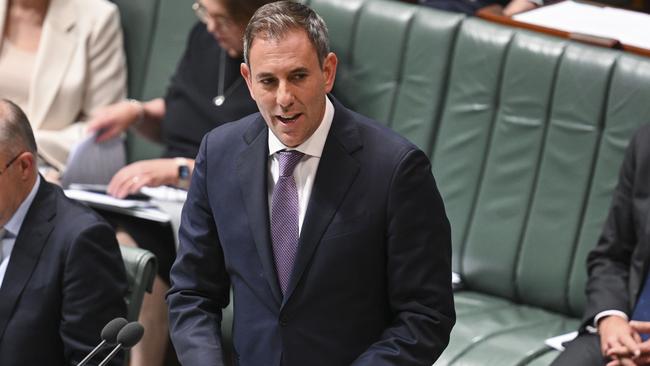
Christine Middap, former editor of The Weekend Australian Magazine, took up the cudgels a year later in her new role as chief writer. In a series of articles, Middap humanised the concerns of farmers whose land is being crossed to build 10,000km of new poles and wires linking wind and solar generation across the nation.
This column has been reading the Australian Energy Market Operator 2024 draft Integrated System Plan, the latest CSIRO GenCost report, last Wednesday’s excellent Centre for Independent Studies analysis of the shortcomings of both, and the latest Grattan Institute report on problems in the National Electricity Market. Such is life when bad weather rules out golf or a surf.
This newspaper’s environment editor Graham Lloyd is across these reports but more editors need to get their news desks to start reporting what’s happening on the ground.
The Australian’s former weekend editor Nick Cater has covered the issues in his weekly column and on his Substack site. But telling the nation what’s really happening across a continent will require news organisations to make a serious reporting commitment.
A good place to start is the interactive map published by reneweconomy.com.au, broken down into approved and proposed projects and filtered by category: battery storage, onshore wind farms and large scale solar farms. This provides a quick insight into how the nation is spending probably half a trillion dollars today and a lot more by its 2050 net-zero emissions deadline.
The energy transition was brought into sharp relief last week by Jim Chalmers’ talk to the Lowy Institute, in which he discussed his Made in Australia thinking. It still sounds awfully like, “how about governments start driving industry policy?”
Chalmers, who is not an economist but wrote about former ALP treasurer Paul Keating for his political science PhD, thinks economics professionals who have been warning the government against “picking winners” are all just so … yesterday.
Linking Chalmers’ speech to ruminations about electricity is his unshakeable belief that everything the nation does must be tied to its ambition to rebuild Australia as a “renewables superpower”. Never mind our existing competitive advantage as an energy superpower in coal, gas and uranium. Much better, Labor thinks, to focus on our competitive advantage in sun and wind.
Why then are so many other countries moving to expand nuclear power generation as a reliable source of power 24 hours a day with zero emissions? Like Australian economists, they too are just so … yesterday.
Chalmers told Lowy Institute director Michael Fullilove on Wednesday what economists are missing: “It’s not about manufacturing the past: it’s about powering the future … the primary opportunity in the new global economy is the net-zero transformation. And to that we bring the most extraordinary advantages – geological, geopolitical and mineralogical.”
The Treasurer should have another hard look at the facts. Tasmania, long a laggard in industrial development, has been powered by renewables for 100 years. Ditto other renewables “powerhouses” such as Paraguay and Bhutan.
Here are a few things tomorrow’s politicians and journalists might reflect on.
Why has AEMO not tried to calculate carbon emissions in its road map? This column reported four years ago that an EV needs to be driven for three years before it starts paying back its carbon deficit compared with a conventional car. And even that depends on the renewables level in the EV’s charging system.
What are the sunk carbon costs of the hundreds of billions of dollars of wind turbines, solar panels and 10,000km of new power lines Australia plans? How much CO2 is emitted making large lithium ion batteries for grid-scale firming?
The Clean Energy Council says 41 battery projects are under way or due to start soon.
How do we account for the short lifespan of such batteries, expected to be less than two decades? Ditto regular replacement of wind turbines and solar panels, plus the cost of shipping most inputs from China.
Why does AEMO acknowledge the importance of rooftop solar power in the home and home batteries but not cost their installation?
The CIS report, The Six Fundamental Flaws Underpinning the Energy Transition, notes the Integrated System Plan relies heavily on rooftop solar and home batteries but does not include them as a cost because, according to AEMO, “those are decisions that households and business make on their own”.
The CIS cites GenCost estimates that rooftop generation and consumer batteries will have cost $360bn at today’s prices by 2050, “much higher than the $130bn cost of large-scale solar and batteries up to 2050 (which the ISP does include)”. In other words, private households will be required to subsidise the public system at their own expense.
And most private decisions will be driven by government subsidies, so it’s not cost-free at all.
Look at Chalmers’ optimism about hydrogen. To adopt a Keating saying, every pet shop galah today talks about green hydrogen. Why is Chalmers so convinced this is the way forward when even the green evangelist Grattan Institute in its December 3 report on hydrogen urged caution?
Industry expects more funds for hydrogen in Tuesday week’s budget but Grattan’s Tony Wood cautions hydrogen expectations are best limited to production of green ammonia for fertiliser, green iron for steel and green alumina.
Yet even confining Australia’s hydrogen effort to these three sectors would “require more than 30 gigawatts of electricity, 60 per cent more than we have in the National Electricity Market today.” Production of these three commodities “will cost more than incumbent versions unless significant, sustained action is taken”. Read that as government support.
Grattan says the government should be “more cautious about supporting hydrogen uses such as long-duration energy storage and long-distance road freight’’ because hydrogen may not be the best way to decarbonise these.
Why does Chalmers see so much opportunity in net zero? He believes Australia can build enormous electricity output that is very cheap because the sun and wind are free. In this scenario, electricity generation and use rise sharply as gas is phased out, most activities are electrified and Australia embarks on new industries that use large amounts of cheap green power.
It’s a reasonable strategy if the whole world decarbonises. But if the world decides net zero by 2050 is too hard and 1.5C of warming just means a greener planet with fewer deaths from cold, we will be out on a very long limb.
Do we risk becoming the continental version of Tasmania or Paraguay but without the reliability of their hydro-electric power systems?
Editors at left-wing news sites that publish only positive propaganda about the energy transition should read Grattan’s assessment last week of the National Energy Market: “Keeping the lights on: How Australia should navigate the era of coal closures and prepare for what comes next’’.
It’s a sobering assessment of the potential political landmines in our electricity market today.







Three years ago, this column said journalists should start reporting community reactions to the new national electricity grid rollout.